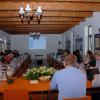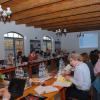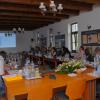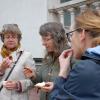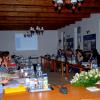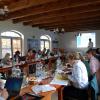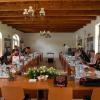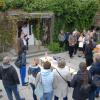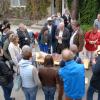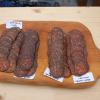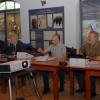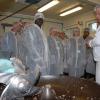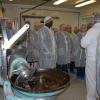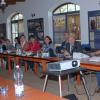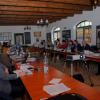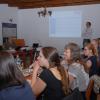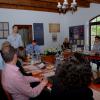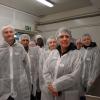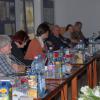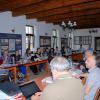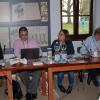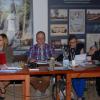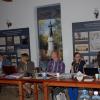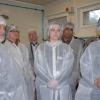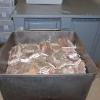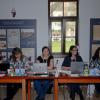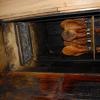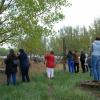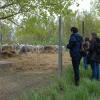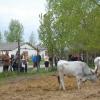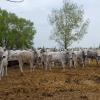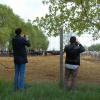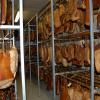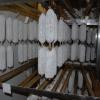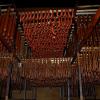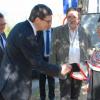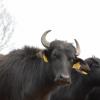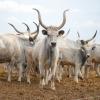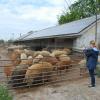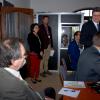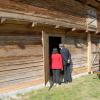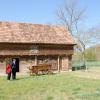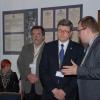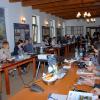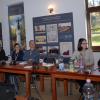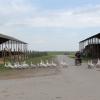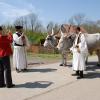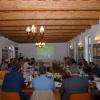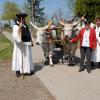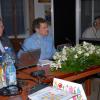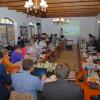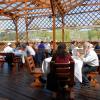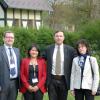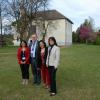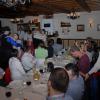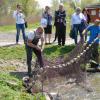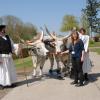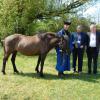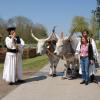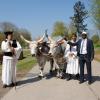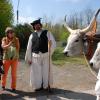
A successful three-day workshop organized jointly by FAO, the European Regional Focal Point for Animal Genetic Resources (ERFP) and the Research Centre for Farm Animal Gene Conservation (HáGK) took place from 12 April to 14 April 2016 in Gödöllő, Hungary. More than 40 experts from all over the world gathered to discuss several topics related to both in situ and ex situ gene conservations.
The event started with welcome address of Mr Vladimir Rakhmanin, FAO Assistant Director-General and Regional Representative for Europe and Central Asia and opening speech of Mr Andriy Rozstalnyy, Animal Health and Production Officer. They emphasized the unique characteristics of the biodiversity of Europe and Central Asia, FAO’s effort to help protect the regional animal genetic resources and the importance of organizing such a workshop.
Presentations about “In situ and ex situ gene conservation in Europe” by Paul Boettcher (link), “Cryobiology and reproduction” by Henri Woelders (link) and “Nagoya protocol and its impact on AnGR and gene banking” by Sipke Joost Hiemtra (link) followed.
The status of in situ and ex situ gene conservation in selected countries including Hungary (by Szalay István, Director of HáGK, link), Albania (by Kristaq Kume, National Coordinator on Genetic Resources, Ministry of Agriculture, link), Lithuania (by Arunas Svitojus, Director of Baltic Charity Foundation, link), Georgia (by Givi Basiladze, Deputy Director of LEPL Scientific Research Centre of Agriculture, link), Macedonia (by Kocho Porchu, Associate professor, Faculty of Agricultural Sciences and Food, link), Moldova (by Tatiana Nistorica, Head of Livestock Department, Ministry of Agriculture and Food Industry, link), Montenegro (by Bozidarka Markovic, Associate professor, University of Montenegro, Biotechnical Faculty, Department of Livestock Production, link), Russia (by Olga Osadchaya, Academic Secretary, Head of Information and International cooperation Department, All-Russia Research Institute of Animal Husbandry, link), Serbia (by Srdjan Stojanovic, Senior Adviser, Ministry of Agriculture and Environmental Protection, link) and Ukraine (by Nataliia Rieznykova, Institute of Animal Breeding, link) was also reported at the workshop.
The exhibitions of indigenous Hungarian farm animals (Old Hungarian Chicken Breeds, Transylvanian Naked Neck Chicken Breeds, Goose Breeds, Old Hungarian Duck Breeds, Hungarian Simmental Cattle, Hungarian Grey Cattle, Carpathian Brown Cattle, Hungarian Water Buffalo, Hucul Horse, Hungarian sheep breeds), and traditional old Transylvanian styled wooden house, the demonstration of Hungarian herdsmen working with grey cattle carriage and Hungarian horse training with leather rope were also arranged for participants at the workshop venue.
On the last day of the event, all participants visited Szomor processing plant where traditional Hungarian meat products such as Hungarian grey cattle, buffalo and Mangalica pig salami were produced and an eco-farm, operated within the land of Kiskunság National Park, as a working example of in situ conservation. The eco farm has approximately 2500 heads of Hungarian grey cattle, more than 200 heads of buffalo, Hungarian sheep, Hungarian goat and indigenous Hungarian poultry (Transylvanian naked neck, White Hungarian, Partridge coloured Hungarian, Speckled Hungarian, Yellow Hungarian chicken, turkeys, frizzled geese, Hungarian duck and guinea fowl) as gene reserve.
The workshop played significant role in providing a forum for scientists with mutual interest to share their knowledge and ideas on enhancing gene conservation practice and a platform for establishing international cooperation network between neighbouring countries. Most participants agreed that similar workshops should be organized in the near future.
Organisers:



Gallery
International Workshop on In situ and Ex situ Gene Conservation
